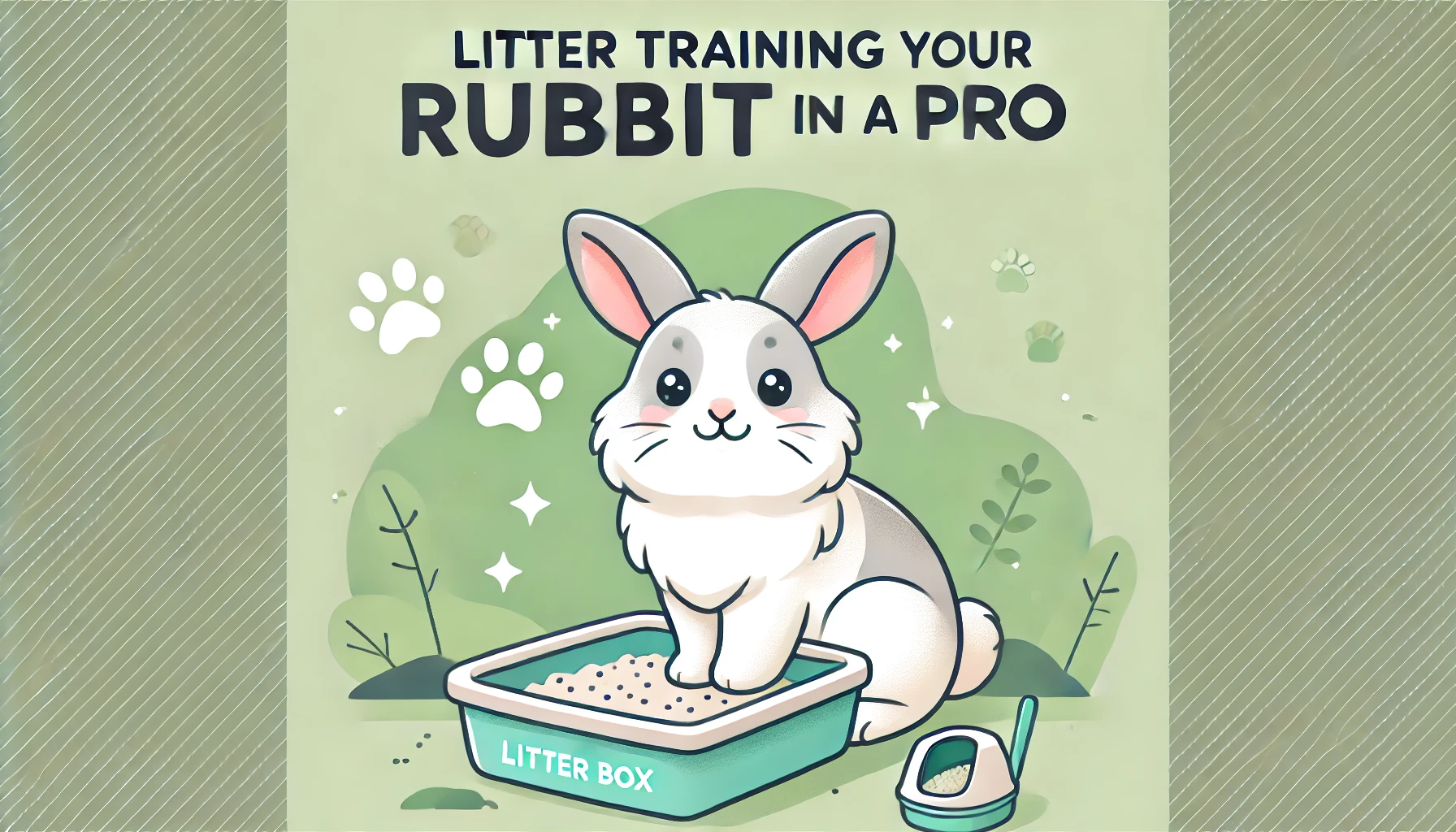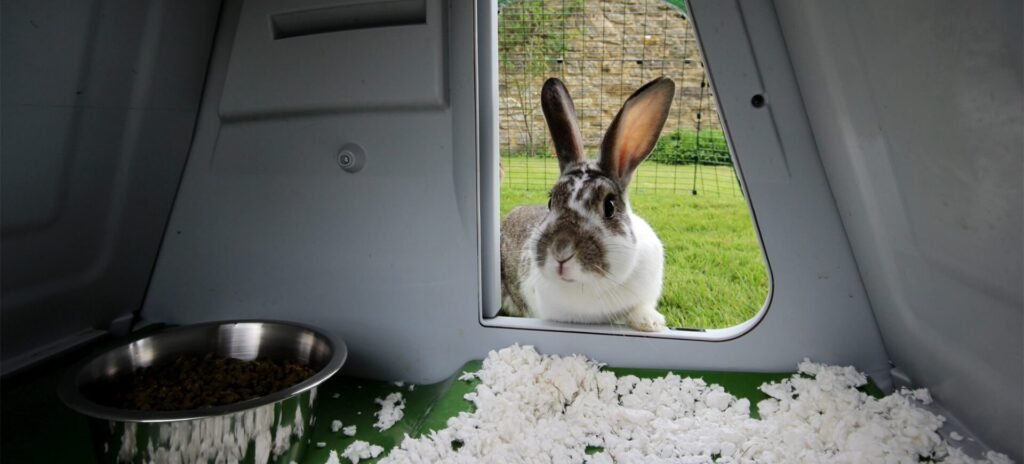
Litter training your rabbit might sound like a challenge, but with patience and the right approach, it can be surprisingly simple! Rabbits are naturally clean animals, and with a bit of guidance, they can learn to use a litter box just like a cat.
Litter training is not only convenient for you but also essential for your rabbit’s well-being. It helps keep their living space tidy, reduces odors, and makes cleaning up much easier. Plus, a litter-trained rabbit can enjoy more freedom around the house without leaving unexpected messes behind!
So, whether you’re a new rabbit owner or just looking to improve your bunny’s litter habits, this guide will teach you how to litter train your rabbit like a pro.
1. Understanding Your Rabbit’s Natural Instincts
Before you start training, it’s important to understand your rabbit’s instincts. Rabbits naturally choose one or two specific spots for their bathroom needs. In the wild, this helps them keep their burrows clean and mark their territory.
By observing your rabbit, you’ll notice that they often return to the same corner to urinate and leave droppings. This natural behavior makes litter training much easier since you’re just reinforcing what they already do.
Common Mistakes to Avoid:
- Moving the litter box too often – Rabbits prefer consistency.
- Not using proper litter – Some litter can be harmful to rabbits.
- Punishing accidents – This can stress your rabbit and slow down training.
By working with your rabbit’s instincts instead of against them, you’ll see quicker and more successful results.
2. Choosing the Right Litter Box
Not all litter boxes are suitable for rabbits. You need to choose one that is comfortable and accessible.
Key Factors to Consider:
- Size: The litter box should be large enough for your rabbit to fit inside comfortably and turn around.
- Depth: A box with high sides can help prevent litter from being kicked out, but at least one side should be low for easy access.
- Material: Avoid wire-bottomed litter boxes as they can hurt your rabbit’s feet.
Covered vs. Uncovered Litter Boxes
- Covered: Helps contain odor but may make some rabbits feel trapped.
- Uncovered: Easier for rabbits to hop in and out, making it a better option for most bunnies.
If you have a large space or multiple rabbits, consider getting more than one litter box. Rabbits appreciate having options!

3. Selecting the Best Litter
Choosing the right litter is crucial for your rabbit’s health and comfort.
Safe Litter Options:
- Paper-based bedding – Soft, absorbent, and safe for rabbits.
- Aspen wood shavings – Unlike pine and cedar, aspen is non-toxic.
- Pelleted wood or paper litter – Great for odor control and absorption.
Litter Types to Avoid:
- Clay-based litter – Can cause respiratory issues.
- Clumping cat litter – Dangerous if ingested.
- Scented litter – Strong perfumes can irritate your rabbit’s nose.
For extra odor control, consider placing a layer of hay on top of the litter. Rabbits love to munch while they go, and this encourages them to use the box consistently.
4. Setting Up the Litter Box Correctly
Where and how you place the litter box can make a big difference in training success.
Best Locations for the Litter Box:
- In a quiet but accessible area
- Near where your rabbit already prefers to go
- Inside their playpen or cage to start training
How to Set It Up:
- Line the bottom with rabbit-safe litter.
- Add hay on one side to encourage usage.
- Keep it stable so it doesn’t move around.
Placing a litter box in every area where your rabbit spends time will reduce accidents and reinforce good habits.
The Fascinating World of Reptiles: Everything You Need to Know
5. Introducing Your Rabbit to the Litter Box
Some rabbits take to the litter box immediately, while others need encouragement.
Steps to Help Your Rabbit Adjust:
- Place them in the litter box after eating or waking up.
- Reward them with treats and praise when they use them correctly.
- Gently move stray droppings into the litter box to reinforce the idea.
If your rabbit seems hesitant, don’t worry! Patience and consistency are key to successful litter training.
6. Common Problems and How to Fix Them
Litter training isn’t always smooth sailing. Some rabbits may struggle with consistency or develop bad habits over time. Let’s go over the most common issues and how to fix them.
Problem 1: Your Rabbit Stops Using the Litter Box
If your rabbit was previously using the litter box but suddenly stopped, consider these possible causes:
- Dirty litter box – Rabbits are clean animals and might refuse to use a soiled box. Clean it more frequently.
- Health issues—Accidents can be caused by Urinary tract infections (UTIs), bladder sludge, or digestive problems. Consult a vet if you suspect health issues.
- Territorial marking – Unspayed/unneutered rabbits may mark new areas with urine and droppings.
Problem 2: Your Rabbit Only Uses the Litter Box Sometimes
- If your rabbit consistently poops outside the box, place another litter box in that spot.
- Reward good behavior with treats and praise to reinforce the habit.
Problem 3: Multiple Rabbits Fighting Over the Litter Box
- Ensure you have multiple litter boxes spread across their living area.
- Neuter/spay both rabbits to reduce territorial disputes.
By troubleshooting these problems early, you can keep your rabbit on track with their litter training.
7. Cleaning and Maintaining the Litter Box
Keeping the litter box clean is essential for your rabbit’s health and hygiene.
How Often Should You Clean the Litter Box?
- Daily: Remove wet spots and droppings.
- Every 2-3 days: Replace litter completely.
- Weekly: Deep clean the litter box with a rabbit-safe disinfectant.
Best Cleaning Methods and Products
- Use white vinegar and warm water to break down urine stains and odors.
- Avoid harsh chemicals like bleach or scented cleaners that can irritate your rabbit.
Keeping the litter box fresh will make your rabbit more likely to use it consistently.
8. Training Multiple Rabbits
If you have more than one rabbit, litter training can be a bit trickier, but it’s possible.
Challenges of Training Multiple Rabbits
- Rabbits may fight over litter boxes.
- Some rabbits prefer separate boxes.
- Unspayed/unneutered rabbits may mark their territory.
How to Make It Work
- Provide multiple litter boxes so each rabbit has options.
- Clean regularly to prevent territorial disputes.
- Observe which spots they prefer and place litter boxes there.
Training multiple rabbits requires patience, but once they establish a routine, it becomes much easier to manage.
How to Potty Train Your Dog: A Step-by-Step Guide
9. Encouraging Good Litter Habits
To ensure long-term success, reinforce good habits and discourage bad ones.
Ways to Encourage Good Behavior
- Give treats when your rabbit uses the litter box.
- Place hay near or inside the litter box to encourage use.
- Be consistent – sudden changes can confuse your rabbit.
How to Discourage Bad Behavior
- If your rabbit eliminates outside the litter box, gently place the droppings inside the box so they will understand.
- Clean up accidents thoroughly to remove scent markers.
With consistency, your rabbit will develop a strong litter box routine.

10. The Role of Spaying and Neutering in Litter Training
Hormones play a huge role in a rabbit’s bathroom habits. Unaltered rabbits tend to mark their territory more and may have difficulty staying consistent with litter training.
Why Spaying/Neutering Helps
- Reduces territorial marking (especially spraying urine).
- Helps with hormonal aggression and bad habits.
- Improves overall litter box consistency.
When to Spay/Neuter Your Rabbit
- Males: Around 3-4 months old.
- Females: Around 4-6 months old.
If your rabbit is struggling with litter training, consider getting them spayed or neutered for better results.
11. Transitioning to a New Litter Box
At some point, you may need to replace your rabbit’s litter box or move it to a new location. Here’s how to make the transition smooth.
Steps for Switching Litter Boxes
- Keep the new litter box in the same spot as the old one initially.
- Use the same type of litter to maintain familiarity.
- Transfer some soiled litter from the old box to help your rabbit recognize it.
Moving the Litter Box to a New Spot
- Gradually move the box a little each day.
- If accidents occur, move it back temporarily and try again.
Rabbits are creatures of habit, so small changes work best.
12. The Connection Between Diet and Litter Training
Your rabbit’s diet has a direct impact on their waste habits.
Key Dietary Factors
- Hay is essential – Helps regulate digestion and poop consistency.
- Avoid sugary treats – These can cause digestive issues.
- Plenty of water – Prevents dehydration and urinary problems.
If your rabbit suddenly has soft stools or unusual urine, consider adjusting their diet.
13. Traveling with a Litter-Trained Rabbit
Traveling with a litter-trained rabbit is easier if you plan.
Travel Litter Box Setup
- Use a small, portable litter box in their carrier.
- Line it with their usual litter to maintain consistency.
- Place some familiar hay inside for comfort.
Tips for Keeping Up Good Habits on Trips
- Keep their schedule as normal as possible.
- Use a confined space so they don’t forget their litter box.
- Be patient if accidents happen – traveling is stressful for rabbits!
With preparation, your rabbit can stay litter-trained even when away from home.
14. Signs of Health Issues in Your Rabbit’s Waste
Monitoring your rabbit’s waste can tell you a lot about their health.
What’s Normal?
- Round, dry droppings.
- Regular urination (light yellow to amber color).
Warning Signs:
- Diarrhea – This can indicate a serious health issue.
- Strong-smelling urine – This could be a sign of infection.
- Tiny droppings – May suggest gut slowdown (GI stasis).
If you notice changes in your rabbit’s waste, consult a vet immediately.
15. Final Tips and Tricks for Successful Litter Training
Here are a few final tips to help make litter training a success:
- Be patient – Every rabbit learns at their own pace.
- Use positive reinforcement – Reward good behavior instead of punishing accidents.
- Keep the litter box clean – A dirty box discourages use.
- Provide multiple boxes – Especially if you have a free-roaming rabbit.
With consistency and the right approach, your rabbit will be a litter-training pro in no time!
Conclusion
Litter training your rabbit is one of the best things you can do for your pet and home. It makes cleanup easier, keeps their living space hygienic, and allows them more freedom to roam.
By understanding your rabbit’s instincts, choosing the right setup, and being patient, you can successfully train your bunny to use a litter box like a pro.
Now, go set up that litter box and enjoy a cleaner, happier home with your fluffy friend!
FAQs
- How long does it take to litter train a rabbit?
- Most rabbits learn within a few weeks, but consistency is key!
- What should I do if my rabbit refuses to use the litter box?
- Try adjusting the location, and type of litter, or adding hay to encourage use.
- Can I use cat litter for my rabbit’s litter box?
- No, clay and clumping cat litter are dangerous for rabbits.
- Do all rabbits need multiple litter boxes?
- It depends on their space and habits. Free-roaming rabbits usually need more than one.
- How do I stop my rabbit from peeing outside the litter box?
- Ensure they’re spayed/neutered, provide multiple boxes, and clean up accidents properly.



